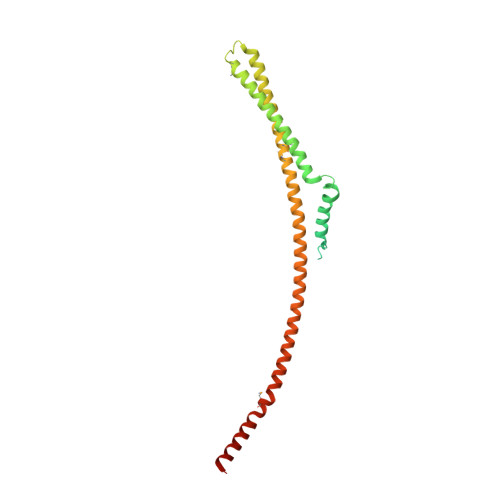Members of the paralogous gene family 12 from the Lyme disease agent Borrelia burgdorferi are non-specific DNA-binding proteins.
Brangulis, K., Akopjana, I., Drunka, L., Matisone, S., Zelencova-Gopejenko, D., Bhattacharya, S., Bogans, J., Tars, K.(2024) PLoS One 19: e0296127-e0296127
- PubMed: 38626020
- DOI: https://doi.org/10.1371/journal.pone.0296127
- Primary Citation of Related Structures:
8CQN, 8CQO - PubMed Abstract:
Lyme disease is the most prevalent vector-borne infectious disease in Europe and the USA. Borrelia burgdorferi, as the causative agent of Lyme disease, is transmitted to the mammalian host during the tick blood meal. To adapt to the different encountered environments, Borrelia has adjusted the expression pattern of various, mostly outer surface proteins. The function of most B. burgdorferi outer surface proteins remains unknown. We determined the crystal structure of a previously uncharacterized B. burgdorferi outer surface protein BBK01, known to belong to the paralogous gene family 12 (PFam12) as one of its five members. PFam12 members are shown to be upregulated as the tick starts its blood meal. Structural analysis of BBK01 revealed similarity to the coiled coil domain of structural maintenance of chromosomes (SMC) protein family members, while functional studies indicated that all PFam12 members are non-specific DNA-binding proteins. The residues involved in DNA binding were identified and probed by site-directed mutagenesis. The combination of SMC-like proteins being attached to the outer membrane and exposed to the environment or located in the periplasm, as observed in the case of PFam12 members, and displaying the ability to bind DNA, represents a unique feature previously not observed in bacteria.
Organizational Affiliation:
Latvian Biomedical Research and Study Centre, Riga, Latvia.















